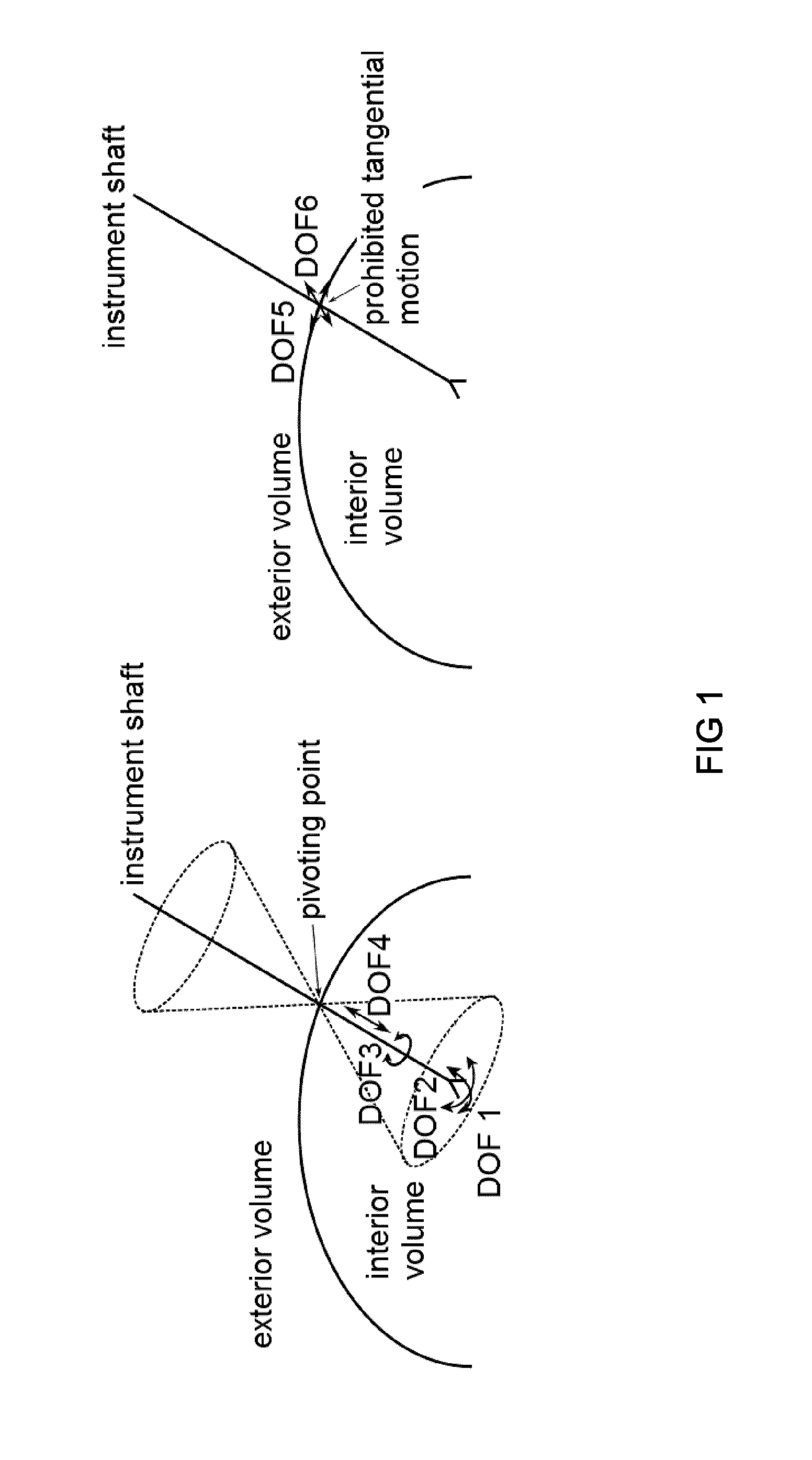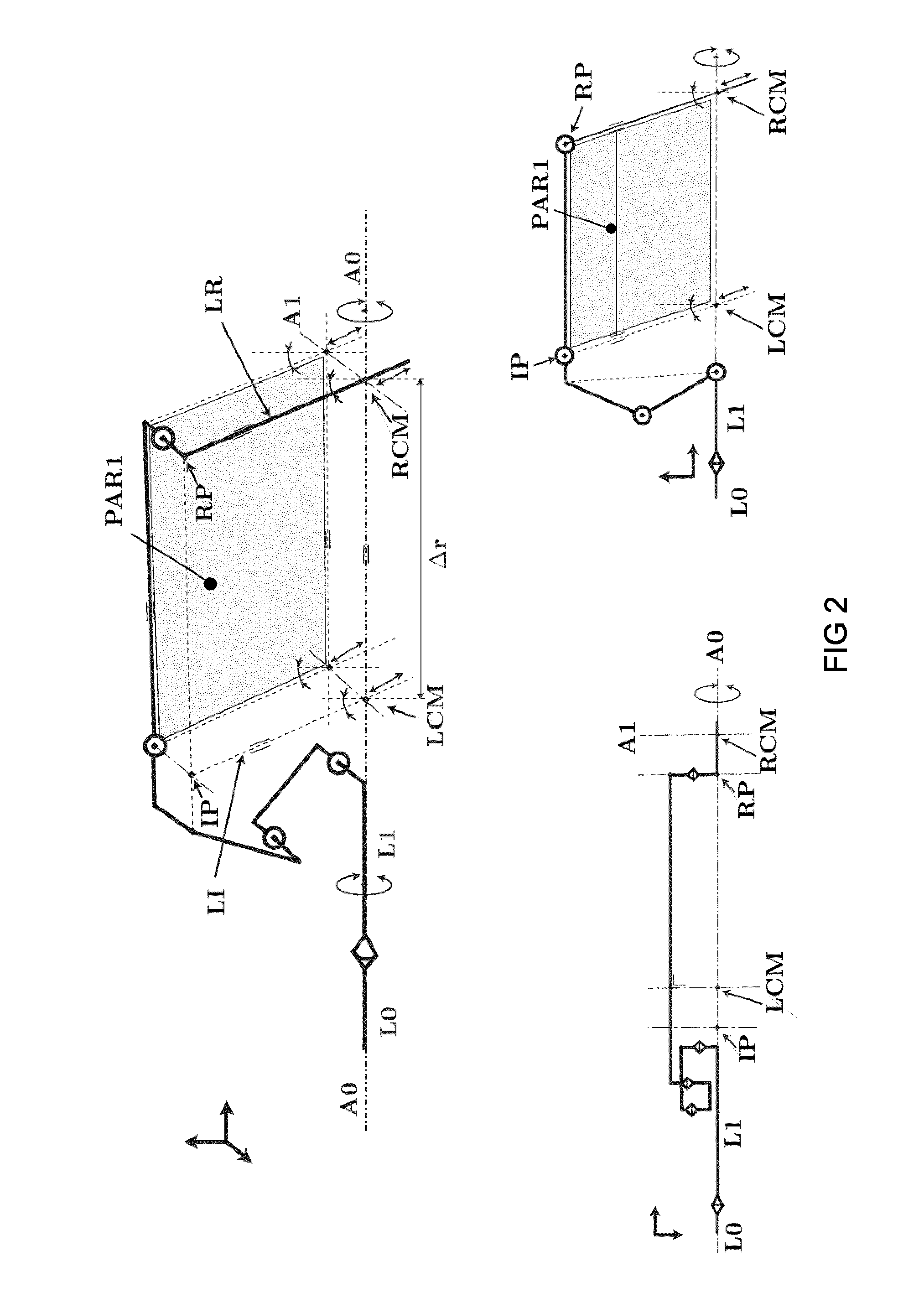An apparatus for generating motion around a remote centre of motion
a remote centre of motion and apparatus technology, applied in the field of robots, can solve the problems of inability to exert large force on the body wall, physical constraints, and inability to accurately position at greater depth, so as to avoid use, avoid loss of accuracy or rcm stability, and facilitate manufacturing and control
- Summary
- Abstract
- Description
- Claims
- Application Information
AI Technical Summary
Benefits of technology
Problems solved by technology
Method used
Image
Examples
Embodiment Construction
[0113]An important insight that lies at the basis of the proposed invention is that one single parallelogram and a means to position such parallelogram appropriately in space suffices to transfer motion from a local, or proximal, center of motion (which shall be referred to as LCM) to a remote center of motion (RCM). Depending on the mobility of the LCM, depending on the implementation of the single parallelogram and on the implementation of the means to position the single parallelogram appropriately in space, a mechanism can be composed that allows remote positioning of DOF1, DOF2 and DOF3. If additional means are foreseen to transfer the rotation degree of freedom DOF4, all available degrees of freedom DOF1, DOF2, DOF3 and DOF4 can be transferred to the remote instrument. Note that without loss of generality the rotation angles along DOF1, DOF2 and DOF4 will be respectively referred to as roll, pitch and yaw angle in the following.
[0114]It is a basic object of this document to di...
PUM
 Login to View More
Login to View More Abstract
Description
Claims
Application Information
 Login to View More
Login to View More - R&D
- Intellectual Property
- Life Sciences
- Materials
- Tech Scout
- Unparalleled Data Quality
- Higher Quality Content
- 60% Fewer Hallucinations
Browse by: Latest US Patents, China's latest patents, Technical Efficacy Thesaurus, Application Domain, Technology Topic, Popular Technical Reports.
© 2025 PatSnap. All rights reserved.Legal|Privacy policy|Modern Slavery Act Transparency Statement|Sitemap|About US| Contact US: help@patsnap.com



